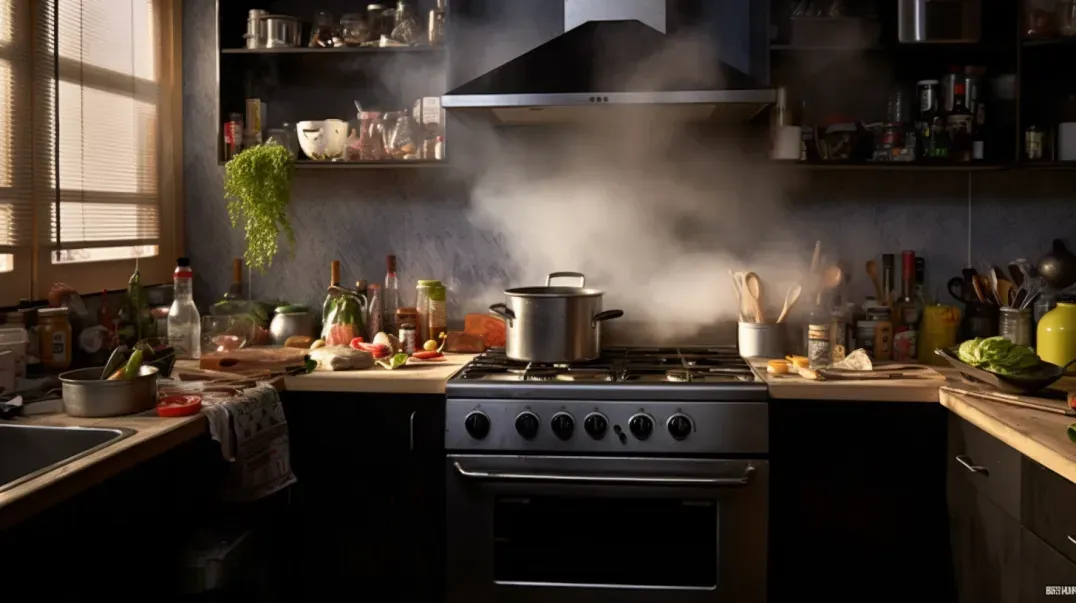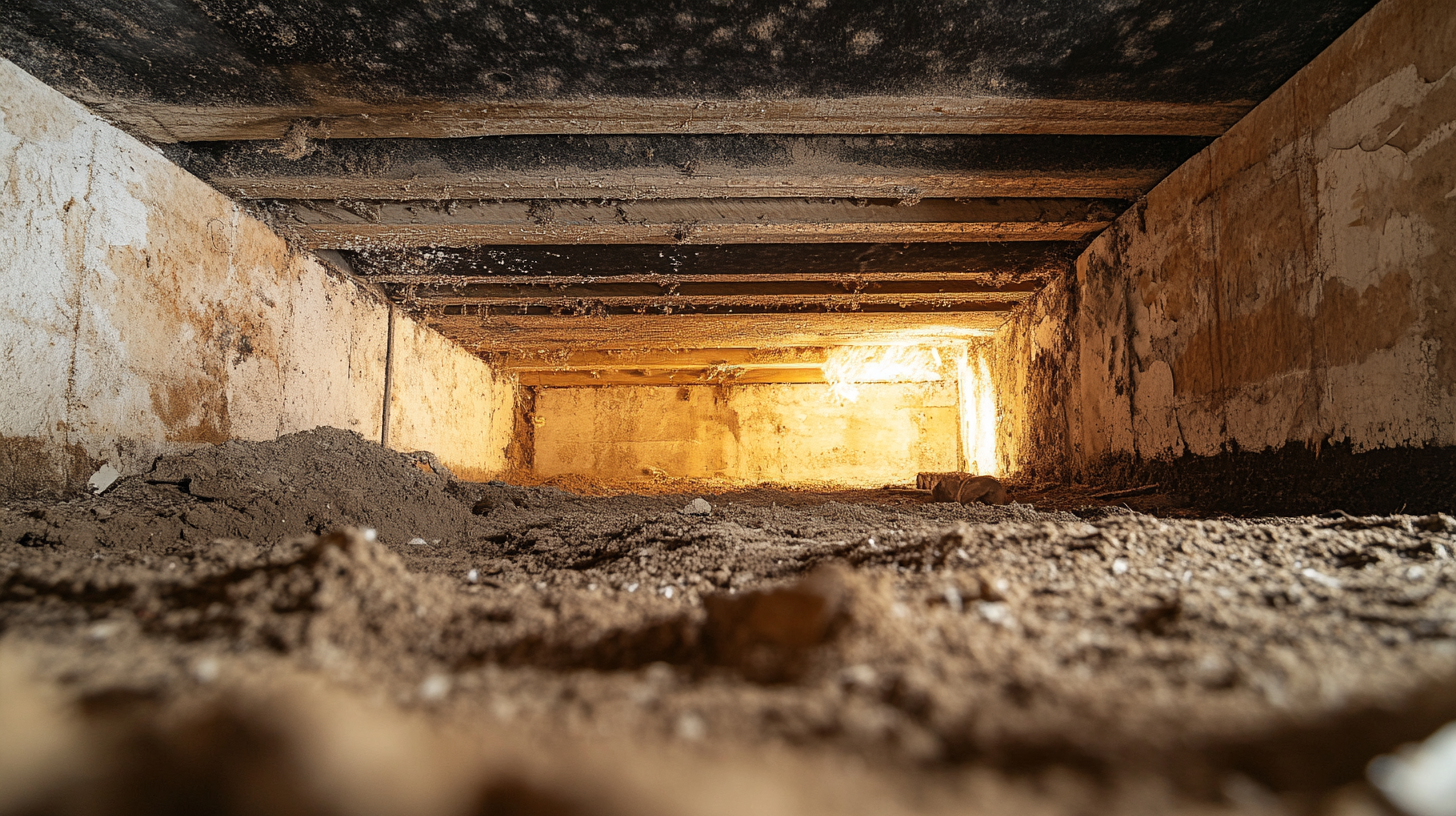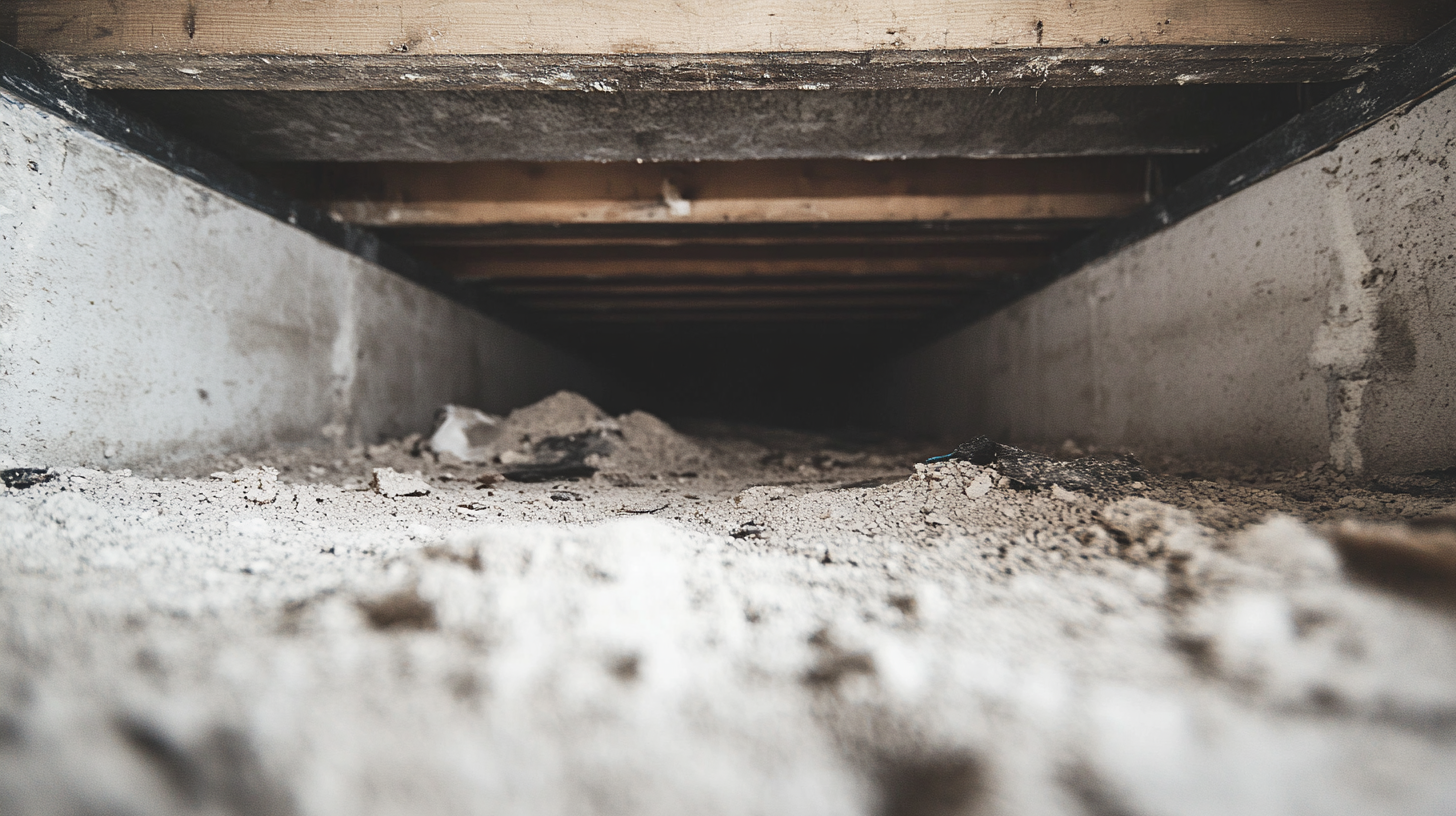"Beyond Aesthetics: The Structural Impact of Soot and Its Removal

Soot is often regarded as little more than an unsightly blemish that mars the surfaces of walls, ceilings, and furniture. Commonly seen as a mere nuisance that requires cleaning up, its darker implications for health and environment frequently go unrecognized. This perception minimizes the potential hazards soot represents, overshadowing the urgent need for more comprehensive responses to its presence. This blog seeks to challenge and expand the conventional understanding of soot, exploring how its impact extends far beyond aesthetic concerns to encompass significant health, environmental, and economic issues. We will delve into why soot should not be underestimated and discuss the science behind its formation and the broader implications of its accumulation. Join us as we uncover the hidden dangers of soot and advocate for a more informed and proactive approach to managing this pervasive pollutant.
Understanding the Nature of Soot
Soot may seem like a simple byproduct of combustion, but its impact on structures, human health, and the environment is far-reaching and complex. This section delves into the intricate composition and properties of soot, as well as its interactions with various structural materials, highlighting the importance of managing soot contamination effectively.
Composition and Properties of Soot
Soot is primarily composed of carbon particles formed through the incomplete combustion of hydrocarbon-based materials such as wood, fossil fuels, and plastics. These particles are extremely fine, often Nano-sized, which allows them to remain airborne and infiltrate deep into the lungs and environmental matrices. A closer look at the composition and properties of soot reveals:
- Chemical Composition: Soot particles can contain a mix of various chemicals including acids, chemicals, metals, and dust, depending on what was burned. This mix often includes carcinogenic polycyclic aromatic hydrocarbons (PAHs) and other toxic substances.
- Physical Properties: Soot particles are characterized by their black, powdery texture. They are hydrophobic (water-repelling) due to their carbonaceous nature, making them difficult to clean and remove once deposited.
- Corrosive Properties: The acidic components of soot can make it highly corrosive. This is particularly damaging over time to metals, stone, and other materials, which can weaken structural integrity and cause aesthetic damage.
How Soot Interacts with Structural Materials
The interaction between soot and structural materials is not just a surface-level concern; it can affect the longevity and safety of buildings. Understanding these interactions is crucial for effective cleaning and maintenance:
Adhesion to Surfaces: Soot particles have a high surface area to volume ratio, allowing them to adhere strongly to almost any type of surface. This adhesion is facilitated by the static charge that soot particles often carry.
Impact on Different Materials: Soot interacts differently with various building materials:
- Metals: Soot can accelerate rusting and corrosion in metals due to its acidic components.
- Paints and Coatings: Soot can penetrate and stain painted surfaces, leading to discoloration and the degradation of protective coatings.
- Plastics and Fiberglass: These materials can absorb soot’s volatile organic compounds, resulting in discoloration and structural weakening.
- Wood and Paper Products: Soot can cause staining and promote the degradation of wood and paper through acid-catalyzed hydrolysis reactions.
- Cleaning Challenges: Removing soot from materials is challenging due to its fine particle size and oily nature. Specialized cleaning techniques such as dry sponging, chemical sponges, and the use of specific solvents are often required to effectively remove soot without causing further damage.
Soot's Impact on Building Structures
Soot is not merely an unsightly residue; it poses significant threats to the integrity and longevity of building materials. Understanding soot's corrosive effects and its potential to degrade materials is crucial for maintaining structural safety and durability. This section explores how soot contributes to the corrosion of metals and the overall degradation of various building materials.
Soot and Corrosion
Soot can significantly accelerate the corrosion process in metals and other susceptible materials found in building structures. Here’s how soot contributes to corrosion:
- Acidic Properties: Soot often contains acidic compounds that arise from incomplete combustion. When soot deposits on metal surfaces, these acids can interact with the metal, especially in the presence of moisture, leading to accelerated oxidation, commonly known as rust.
- Electrochemical Effects: Soot particles can also enhance electrochemical reactions that promote corrosion, particularly in metallic structures. The presence of soot can facilitate the transfer of electrons that accelerate the deterioration of metal.
- Environmental Triggers: In environments with high humidity or exposure to other pollutants, soot can interact with these elements to create a more aggressive corrosive environment. This is particularly concerning in industrial areas where soot and other industrial emissions can combine.
Soot and Material Degradation
Beyond accelerating corrosion, soot can weaken structural integrity over time, affecting a wide range of materials used in construction:
- Concrete and Stone: Soot particles can penetrate porous materials like concrete and stone, leading to surface staining and gradual breakdown of the material structure. Over time, this can reduce the material's strength and make it more susceptible to further damage from environmental factors.
- Wood and Composite Materials: Soot can infiltrate wood grain and composite fibers, weakening the structural integrity through chemical interactions that break down the cellulose or other fibrous components.
- Thermal Insulation Properties: Soot accumulation can affect the thermal insulation properties of materials by filling in air gaps in insulative materials, such as fiberglass or foam insulation. This reduces their effectiveness and can lead to increased energy costs.
- Paints and Protective Coatings: Soot can adhere to and gradually break down paints and protective coatings. This not only affects the aesthetic quality of surfaces but also removes the protective barrier that these coatings provide, exposing materials to environmental damage.
- Accelerated Wear and Tear: In all materials, the presence of soot can accelerate wear and tear, shortening the lifespan of building components and necessitating more frequent repairs and replacements.
Assessing Soot Damage in Structures
Soot damage can be subtle yet pervasive, affecting buildings in ways that may not immediately be apparent. Effective assessment of soot damage is crucial to maintaining the structural integrity and safety of buildings. This section discusses how to recognize signs of soot-related damage and the importance of professional evaluations for accurate assessment.
Signs of Soot-Related Structural Damage
Identifying the presence of soot damage involves recognizing various indicators that suggest its impact on a building's structure. Key signs include:
- Discoloration and Staining: One of the most visible signs of soot damage is the discoloration or staining of surfaces, particularly on walls, ceilings, and other exposed areas. Soot particles can adhere strongly to surfaces, leading to persistent black or gray marks that are difficult to clean.
- Corrosion of Metals: Soot can accelerate the corrosion process in metal structural components. Look for signs of rusting or weakening in metal beams, fasteners, and supports, especially in areas with significant soot deposition.
- Deterioration of Paint and Coatings: Soot can degrade paints and protective coatings, leading to their flaking, peeling, or blistering. This not only affects the aesthetics but also reduces the protective function of these coatings against moisture and other environmental factors.
- Odors: Persistent smoky odors can indicate the presence of embedded soot particles within materials, which may be releasing volatile organic compounds (VOCs) into the environment.
- Poor Air Quality: Increased particulate matter in indoor air can be a sign of soot accumulation, particularly in ventilation systems or hard-to-clean areas, affecting overall air quality and posing health risks.
Professional Assessment and Evaluation
Given the complexity and potential risks associated with soot damage, professional assessment is crucial:
- Thorough Inspection: Professionals use tools and techniques to conduct a comprehensive inspection of affected areas, including places that are not immediately visible or accessible. This ensures no soot damage is overlooked.
- Expertise in Damage Identification: Trained experts can distinguish between different types of damage and understand the long-term implications of soot exposure on various materials.
- Accurate Assessment Tools: Professionals may use advanced technology such as infrared cameras, moisture meters, and air quality monitors to assess the extent of soot penetration and moisture associated with firefighting efforts.
- Detailed Reporting: A professional assessment results in a detailed report that outlines the extent of the damage, recommends remediation steps, and can be used for insurance claims and legal documentation.
- Guidance on Remediation: Based on their assessment, professionals can advise on the best remediation strategies to restore the property effectively and safely, preventing further damage.
Effective Soot Removal Techniques for Structural Integrity
Ensuring the structural integrity of buildings affected by soot involves not just removing visible soot but also addressing hidden accumulations that can undermine the building's longevity and safety. This section provides an overview of effective cleaning methods tailored for structural components and strategies for tackling soot in less accessible areas.
Cleaning Methods for Structural Components
Removing soot from structural components requires careful consideration of the material involved and the extent of the soot deposition. Here are some effective techniques and considerations:
- Dry Sponging: Before using any wet cleaning methods, it's advisable to remove as much soot as possible with dry sponges. This method is particularly effective on porous surfaces where water can drive soot deeper into the material.
- Vacuuming with HEPA Filters: Using high-efficiency particulate air (HEPA) vacuum cleaners can help remove fine particulate matter from surfaces before other cleaning methods are employed. This is crucial for preventing the spread of soot during cleaning.
- Chemical Sponges and Degreasers: Non-water-based chemical sponges are useful for absorbing soot without pushing it into the material. For greasier soot types, specially formulated degreasers can break down soot particles, making them easier to remove.
- Controlled Washing: When water cleaning is necessary, controlled use of low-pressure washers or steam cleaning can be effective, especially when combined with soot-removal detergents that are designed not to soak into materials deeply.
- Professional Equipment: In severe cases, the use of professional-grade equipment, such as thermal foggers and ozone machines, might be required to neutralize soot residues thoroughly and safely.
Addressing Hidden Soot Accumulation
Soot can accumulate in hard-to-reach areas such as air ducts, behind walls, and in attics or crawl spaces, posing a hidden risk to structural integrity and air quality. Here are strategies to effectively manage this hidden threat:
- Inspection and Assessment: A thorough inspection using cameras and other diagnostic tools can help identify soot accumulation in hidden areas. This step is crucial for planning the cleaning process.
- Access Creation: Sometimes, it may be necessary to create access points to clean soot effectively. This might involve removing sections of drywall or lifting floorboards to reach accumulated soot.
- Air Duct Cleaning: Professional air duct cleaning is essential to remove soot from ventilation systems, preventing it from circulating throughout the building and causing recurring contamination.
- Structural Air Sealing: After soot removal, sealing off these hidden areas can prevent future accumulations and improve the building's overall energy efficiency and air quality.
- Regular Maintenance and Checks: Post-cleanup, setting a schedule for regular inspections and maintenance can help catch new accumulations early and ensure that the cleaning measures have been effective.
Preventive Measures and Maintenance
Preventing soot accumulation and ensuring regular maintenance are key to safeguarding the structural integrity of buildings and maintaining healthy indoor environments. This section offers practical tips for minimizing soot production and outlines essential guidelines for regular inspections and maintenance to prevent soot-related damage.
Reducing Soot Accumulation
Minimizing soot production within buildings is essential for reducing maintenance costs, enhancing air quality, and prolonging the life of building materials. Here are several effective strategies:
- Optimize Combustion Appliances: Ensure that all combustion appliances such as boilers, heaters, and stoves are operating efficiently. Regular servicing can prevent incomplete combustion, a common source of excessive soot production.
- Use Appropriate Fuels: Only use recommended fuels for your appliances. For instance, dry, seasoned wood burns cleaner than wet or green wood in fireplaces and wood stoves. Similarly, using high-quality fuels in oil burners can significantly reduce soot output.
- Improve Ventilation: Enhance the ventilation in areas prone to soot accumulation, especially where combustion appliances are used. Proper ventilation helps disperse particles more effectively, preventing them from settling on surfaces.
- Adopt Air Filtration Systems: Installing air purifiers or upgrading HVAC systems with high-efficiency particulate air (HEPA) filters can trap soot particles and other pollutants, thereby improving indoor air quality and reducing surface accumulation.
- Educate Occupants: Inform building occupants about the causes of soot and encourage practices that minimize its production, such as adjusting the flame settings on gas appliances to ensure a cleaner burn.
Regular Inspection and Maintenance
Routine inspections and maintenance are critical to identify early signs of soot damage and to implement timely interventions. Here’s how to effectively maintain buildings to prevent soot-related structural damage:
- Schedule Regular Cleanings: Establish a regular cleaning schedule to remove soot deposits, especially in areas directly affected by combustion appliances or external pollution sources.
- Conduct Structural Inspections: Periodically inspect structural elements, especially those made of metal or other materials susceptible to corrosion from soot. Check for signs of deterioration or weakness that may indicate corrosive damage.
- Monitor Air Quality: Regularly test indoor air quality to detect elevated levels of particulate matter, which can indicate soot problems. This is particularly important in commercial buildings or industries where air quality directly impacts worker health.
- Maintain Ventilation Systems: Clean and service ventilation systems, including ducts and filters, to ensure they are not circulating soot throughout the building. This also helps maintain their efficiency and prolongs their operational life.
- Keep Detailed Maintenance Records: Maintain logs of all inspections, cleanings, and maintenance activities. This documentation can help track the effectiveness of your soot control measures and can be vital for insurance purposes and compliance with health and safety regulations.
FAQs
Contact Fast Response Cleaning & Restoration Today!
Fast Response Cleaning & Restoration will do everything we can to ensure your experience with us is excellent.
Request A FREE Estimate
Request A FREE Estimate Form
CHECKOUT RECENT POST



Have an Emergency? We're Here to Help!
When it comes to disaster cleanup, we are a seasoned veteran in the industry and have helped hundreds of property owners just like you.
Our disaster recovery teams are available 24-7 to quickly clean up and repair disasters of all types.
